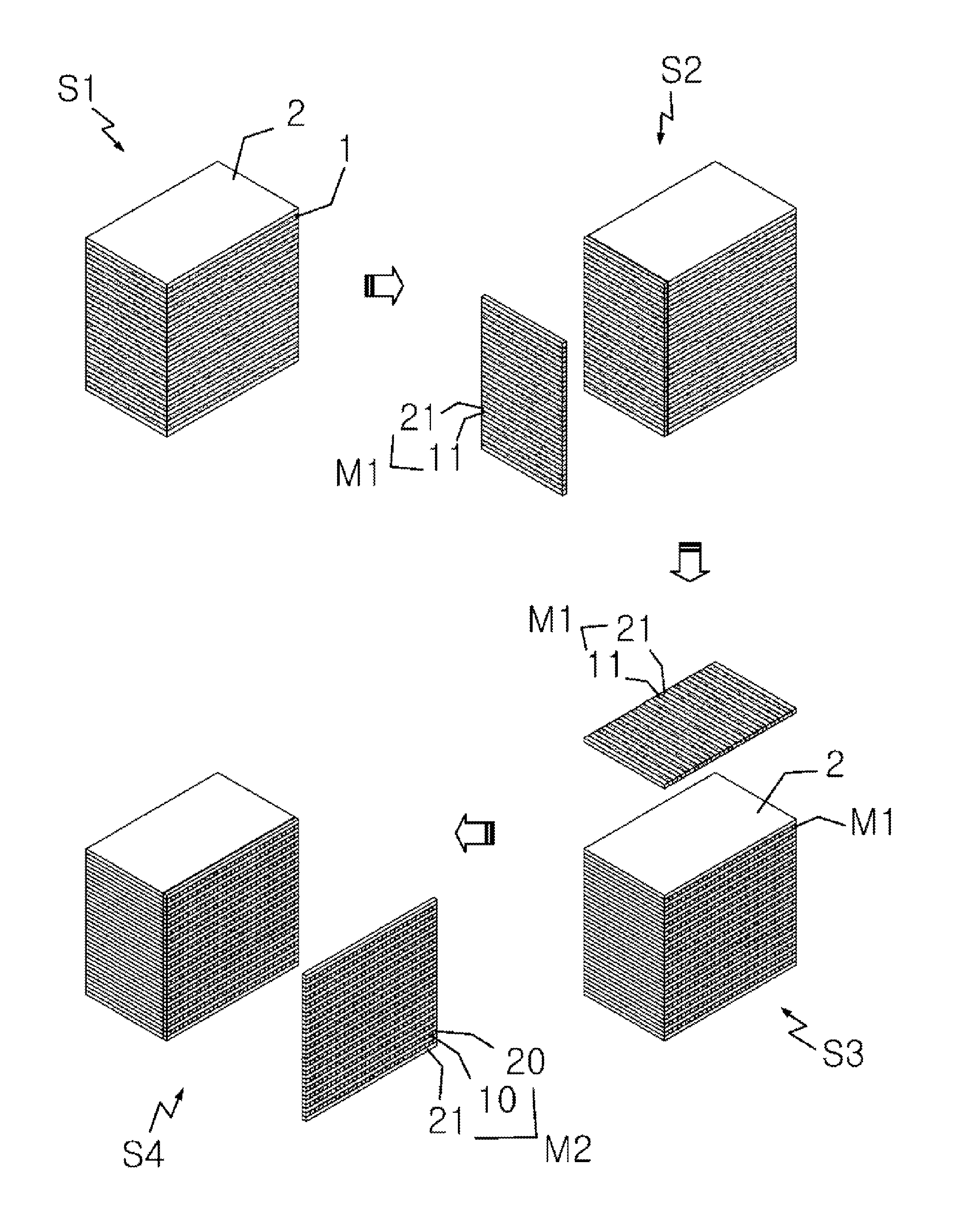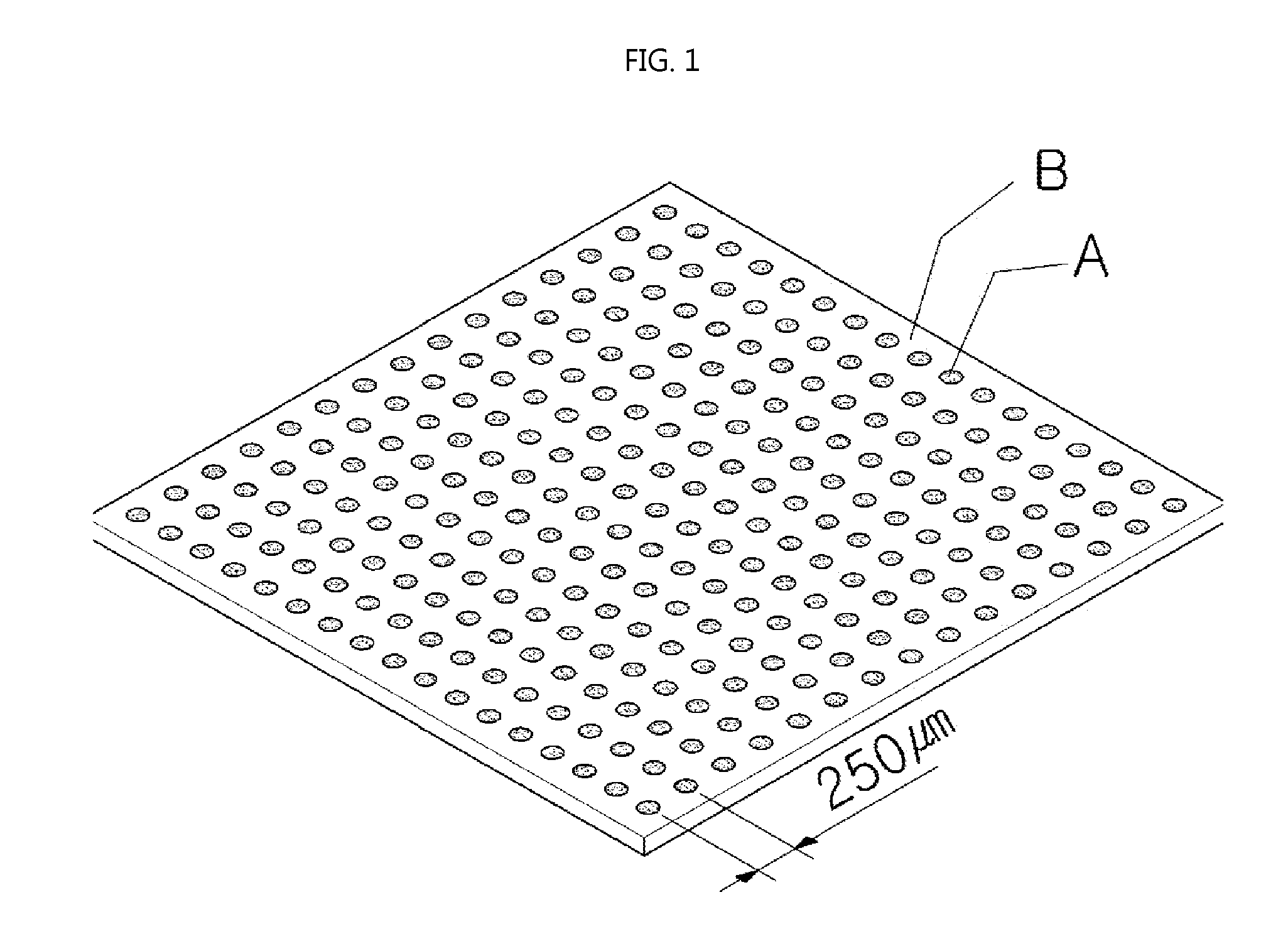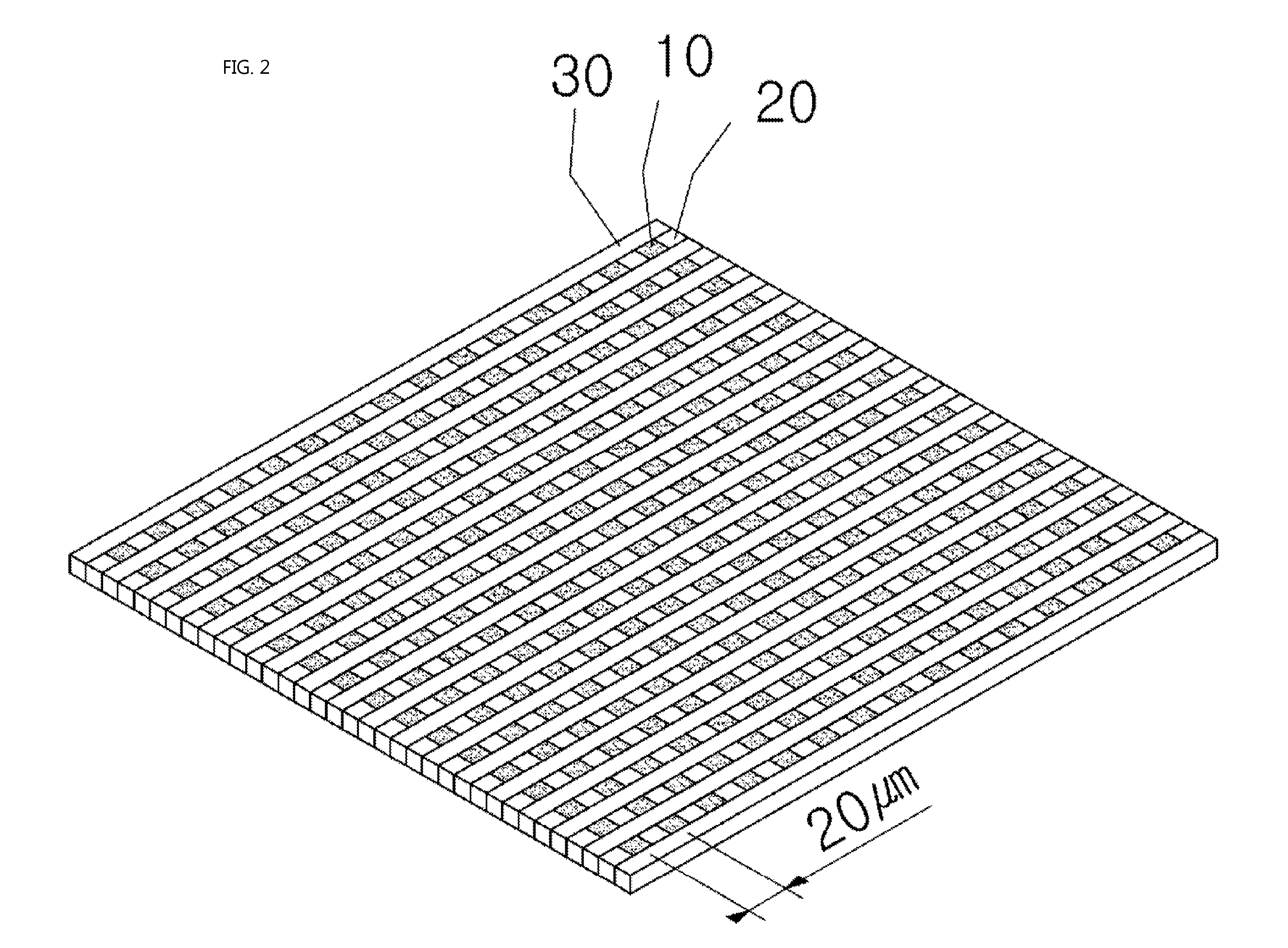Method for manufacturing a contact for testing a semiconductor device
- Summary
- Abstract
- Description
- Claims
- Application Information
AI Technical Summary
Benefits of technology
Problems solved by technology
Method used
Image
Examples
Embodiment Construction
[0026]First, referring to a contact shown in FIG. 1 which is manufactured by a conventional method, the contact is configured so that a plurality of electrically conductive column-type portions A are uniformly arranged on an electrically nonconductive dielectric plate B.
[0027]As described before, this configuration is obtained by filling a perforated dielectric plate B with a conductive material, or as disclosed in the above-mentioned cited document, by providing conductive metal powders in a liquefied dielectric and magnetically forming conductive pillars.
[0028]However, both the methods essentially require perforations, which are formed directly in the dielectric plate or in dies by a mechanical machining method, in order to fabricate a contact. Here, since a pitch of perforations formed by mechanical machining can be physically limited to 250 μm or more, in the case of micro semiconductor device, there are many limitations on contact, a position, a quantity, a disposition, etc.
[00...
PUM
| Property | Measurement | Unit |
|---|---|---|
| Thickness | aaaaa | aaaaa |
| Width | aaaaa | aaaaa |
Abstract
Description
Claims
Application Information
 Login to View More
Login to View More - R&D
- Intellectual Property
- Life Sciences
- Materials
- Tech Scout
- Unparalleled Data Quality
- Higher Quality Content
- 60% Fewer Hallucinations
Browse by: Latest US Patents, China's latest patents, Technical Efficacy Thesaurus, Application Domain, Technology Topic, Popular Technical Reports.
© 2025 PatSnap. All rights reserved.Legal|Privacy policy|Modern Slavery Act Transparency Statement|Sitemap|About US| Contact US: help@patsnap.com



